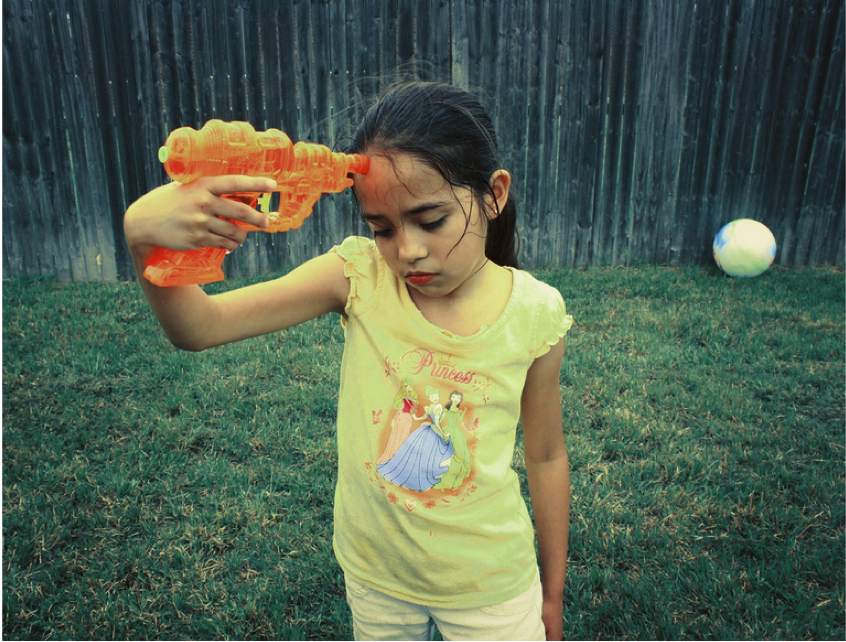
The internet has undergone a fundamental shift in character. Where once the internet was defined by its anonymous nature and as a space for experimentation under the aegis of that anonymity, the recent trend has been towards connecting real world identities to a digital presence. Instead of possessing distinct offline and online identities and allowing for anonymous interaction, increasingly internet users construct a single identity in a newly blurred definition of online and offline spaces. While much of the shift has been driven by the governmental and corporate desire to neatly categorize and track individuals, a generation of new users to the internet have brought their own ideas on how the online world relates to offline identity and have been provided the tools to ensure the distinction between being on or off the internet is a nebulous one. Old notions of separate worlds have eroded in the face of the rise of mobile technology and an “always on” mentality towards the internet has resulted in a trend towards the augmentation of our virtual selves to bolster and validate our real world lives. The shift in mentalities has not been seamless, as new rules of behavior and social interaction have not yet caught up to a new paradigm of a pervasive digital environment that now exists constantly alongside the physical world.
Consider the terms used to differentiate the internet from the physical world. The real world. The virtual world. Offline. Online. Meatspace. Cyberspace. America. Digital America. From its inception, the internet has been regarded as a separate place from the physical world and as such not constrained by the rules and sometimes the morals of modern life. It’s not an new or alien concept. The rule bending, dreamlike, frenetic atmosphere of the great amusement parks of Coney Island in the early 1900s helped restructure the rigid social order of the Victorian age and Las Vegas has built its entire marketing campaign on the idea that it is a separate space where rules are different and normal modes of behavior do not necessarily apply. Early media representations of the internet played into that definition, as film and television posited the virtual space as a new world of neon lights, impossible feats, dodgy graphics and potential danger inhabited by fringe elements of the population. The result was an ingrained binary conceptualization of the differences between the online and offline state, as well as differences between those who used the internet and those who did not. Like a switch, a person was on or off the internet, without any in between. The pervasiveness of this binary concept of online and offline modes have colored how popular culture has continued to depict the physical component of being online as well. Slouching over a keyboard in a darkened room with the remnants of two days worth of pizza and a warm two liter bottle of Mountain Dew is being online. Relaxing on a sunny beach with attractive people and a beer or running playfully through a pristine pre-industrial forest in some kind of idealized but harmless neo-Luddite rejection of technology is living in the real world. By consistently engineering the popular acceptance of a binary space, it lent credibility to the notion that actions and identity on the internet could be disassociated with the real world.
Increasingly however, the original idea of separate worlds has become mitigated. The rise of new technologies and social media platforms have subverted the binary nature of offline/online. When a far future history of the internet is written, perhaps Facebook will take the credit or the blame for jump-starting the move towards one identity and popularizing merging real activities with a virtual life. Yet Facebook and similar social media services could not function if users were only tethered to their home machines. The new technologies of mobile devices and the explosion of wireless internet have redefined where the internet exists and have reshaped mentalities towards virtual spaces and existence. Mobile computing devices such as iPads and smartphones have reduced the learning curve for digital literacy while offering services to instantly pull information from the internet and transcribe real experiences onto the virtual world from anywhere. Technology has offered up a relatively simple way to interact with the virtual world that is not far removed from interacting with friends and family in the physical world.
Spurred on by the validation social media offers as well as the ego boost, anything becomes fair game for sharing with others as the virtual space has become a familiar space—and as in the physical world, familiarity breeds contempt. Remarks on the highs and lows of life, comments on others, off the cuff statements, photos of moments perhaps too private to share in previous contexts all become things to post, as the space and moment they are taken in overlaps with the virtual world. The idea of a spatial differentiation between online and offline has vanished and with it the consideration that the rules of one space do not necessarily apply to the other. What was valid at that moment in time in the physical world crosses into the virtual space as well. Alongside the real time construction of an identity online through social media, instant access to IMDB solves bar bets, GPS helps a lost traveler find his hostel, and frustrated gamer can immediately ask for help on Candy Crush Saga [link no longer active]. The virtual world has been repositioned as a social medium overlaid upon the physical world—always there, always accessible, always at the edge of awareness. Future innovations, such as Google Glass, will only continue the trend.
However, although modern mentalities and new internet tools have redefined what it means to be online, they have not yet managed to redefine the rules of behavior for a pervasive digital environment always intersecting with our own. The spaces that exist in the modern world, be it school or church or work or the beach are still physical locations that need to be traveled to. Once in those locations, sets of rules exist and are generally accepted and followed. Some of these rules are clearly spelled out, others are simply understood through cultural cues and social literacy, the end result of growing up exposed to the constant behavioral signals present in daily life. The teacher is in charge of the classroom. No swimsuits at work–usually. Mobile devices have made the internet pervasive, and no longer fixed to certain places such as the home or internet cafes. When the virtual world exists in the same time and place moment by moment, populated not by avatars with pseudonyms but real world friends (often in the loosest Facebook sense) which set of rules apply?
As an easy example, by now most people have experienced the situation where a person in a social setting such as a dinner spends the entire evening on their phone. Most would consider it rude, as society continues to hold to the idea that the physical body is a marker of presence. Yet if society is moving towards a new definition of a shared space between the virtual and the physical, is it rude for someone to carry on a conversation with others “present” at the table? Would it be less rude if everyone at the table could also converse with the virtual presences? Is it manners or is it a holdover of the early binary idea of the internet as someplace else far away, rather than all around? Like the transformative spaces of Coney Island in 1900, new rules and modes of behavior to cope with the intrusion of new ideas are being invented on the fly, only this time without the safety valve of experimenting in a separate location. The social blunders, the unintended slights and the failures are out in the open, often recorded and uploaded for posterity.
As mentalities change online, so too has popular culture begun to depict the digital world as simply one aspect of a complicated modernity. The 2013 film Her portrays a future where technology has moved into the subtle background, incorporating itself nearly unseen into every aspect of life through voice commands rather than touchscreens and complex devices. As a result there is no transition between the virtual and the real—it is always “on.” In late January 2014, an unpaid bill (a very everyday scenario) in the massively multiplayer online game Eve Online unexpectedly led to one of the costliest conflicts in gaming history. Two coalitions of players rallied thousands of virtual starships worth real money to control a critical planet. As the Battle of System B-R5RB progressed, both sides expressed their belief that reinforcements in the form of North American and European players coming home from work would swing the tides of war. The most significant battle of Eve Online was partly defined by the real world clock and the wait for players to assume their roles in the conflict as they moved from one aspect of their physical lives to one aspect of their virtual lives as easily as running to the corner store. The Japanese anime Sword Art Online [site no longer live] began with the conceit that players of a revolutionary massively multiplayer online game were trapped within the virtual space. The very first act of the mastermind behind the mental hijacking was replace the players avatars with representations of their real bodies, thanks to the biometric data picked up by the game’s physical controller. The imposition of their physical forms onto the virtual space made the player’s situation “more real” by stripping away any constructed identity.
It may be too soon to account for the impact the interconnected forces of new technologies and new mentalities towards the internet will have. On one hand, the elimination of the barriers (both mental and technological) that exist keeping the virtual and physical separate promises to have exciting applications for daily life in fields such as medicine, education and digital architecture. On the other, sublimating the digital world into our mundane physical space with all of its attendant dysfunctions robs the internet of its intriguing potential for building new and potentially better systems as well as better identities. Far from remaining an idealized space for experimentation and development, the digital world becomes a mirror reflecting the structures and stresses of modern life. In the 1983 film WarGames, when shown the impending consequences of a nuclear war by an artificial intelligence, the worried human protagonist asks, “Is this a game, or is it real?” The machine flatly responds, “What’s the difference?” It may well define the greatest shift in our perception of the physical and digital that in the near future, it will be the human that responds in the same way.


